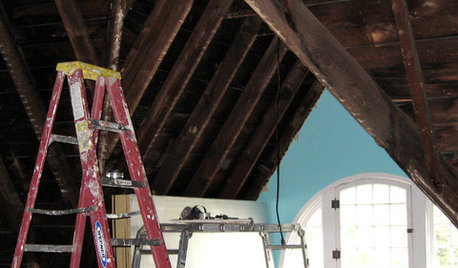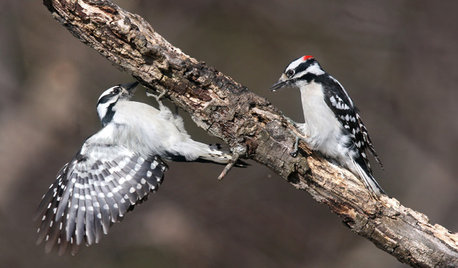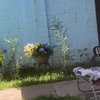Could someone help identify this tree?
jenniferschnepf
13 years ago
Related Stories

DECORATING GUIDESCould a Mission Statement Help Your House?
Identify your home’s purpose and style to make everything from choosing paint colors to buying a new home easier
Full Story
REMODELING GUIDES8 Lessons on Renovating a House from Someone Who's Living It
So you think DIY remodeling is going to be fun? Here is one homeowner's list of what you may be getting yourself into
Full Story
GARDENING FOR BIRDSBackyard Birds: How to Identify Two Common Woodpeckers
Downy and hairy woodpeckers have similar coloration and behavior. But there are two big differences that separate them
Full Story
ORGANIZINGGet the Organizing Help You Need (Finally!)
Imagine having your closet whipped into shape by someone else. That’s the power of working with a pro
Full Story
ORGANIZINGHelp for Whittling Down the Photo Pile
Consider these 6 points your personal pare-down assistant, making organizing your photo collection easier
Full Story
LIFEDecluttering — How to Get the Help You Need
Don't worry if you can't shed stuff and organize alone; help is at your disposal
Full Story
DECLUTTERINGDownsizing Help: How to Edit Your Belongings
Learn what to take and what to toss if you're moving to a smaller home
Full Story
STANDARD MEASUREMENTSThe Right Dimensions for Your Porch
Depth, width, proportion and detailing all contribute to the comfort and functionality of this transitional space
Full Story
ORGANIZING4 Questions to Help You Organize Your Favorite Photos
Organize your keeper photos with a system that's just right for you, whether it's in the cloud or you can hold it in your hand
Full Story
GARDENING GUIDESTree Care: Common Tree Diseases and What to Do About Them
Learn to recognize trees that may be affected by diseases or pests so you can quickly take action
Full Story






bibbo
Toronado3800 Zone 6 St Louis
Related Discussions
Could someone identify this tropical tree ?
Q
Mystery Trees
Q
Tree identification
Q
delicate evergreen tree z8b
Q
ken_adrian Adrian MI cold Z5
Dan _Staley (5b Sunset 2B AHS 7)
denninmi
Embothrium
shastensis
Dan _Staley (5b Sunset 2B AHS 7)
pineresin
Embothrium
Embothrium
shastensis
Dan _Staley (5b Sunset 2B AHS 7)
Embothrium
shastensis
Dan _Staley (5b Sunset 2B AHS 7)
eonibm